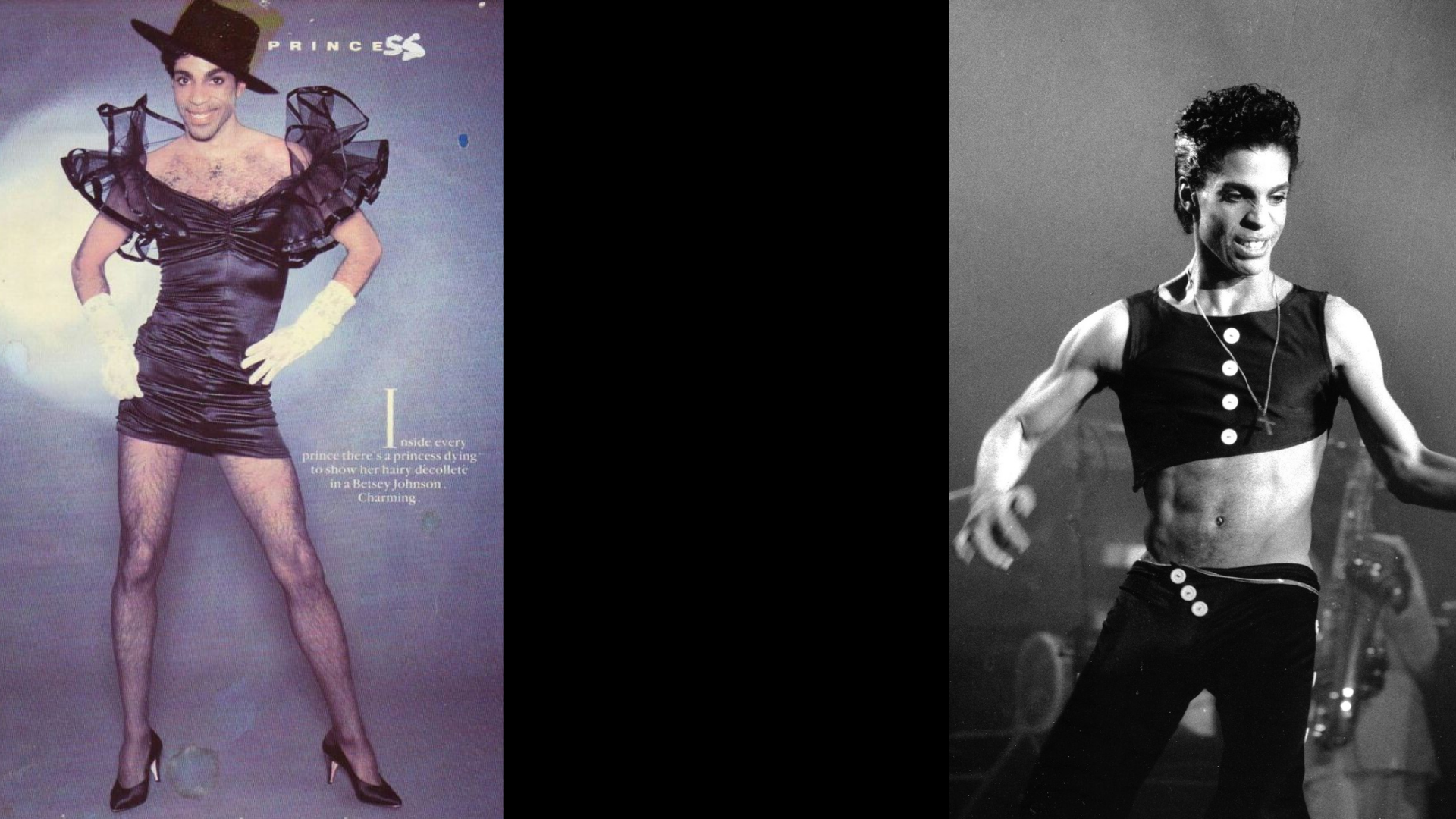Celebrating fashion icons: Prince
Looking at the command Prince had over fashion.

Prince. Dead? Say it isn’t so! Since age 15, I don’t think I've ever gone more than two days without listening to a Prince song. Because I’m not a ‘local’, I rarely listen to mainstream hits like ‘Purple Rain’ or ‘1999’. I'm just so quirky! I prefer the deep cuts - ‘7’, ‘Damn U’ or maybe ‘Black Sweat’ - whatever mood I’m in, there seems to be a Prince song to compliment it. The magical thing about listening to Prince is that his catalogue is so immensely diverse, incredibly long, and unequivocally groundbreaking, just like his wardrobe.
What colour comes to mind when you think of Prince? Stop right there! Don’t say it. Believe it or not, it isn’t purple. If we associate 'The Artist Formerly Known as Prince' with any colour, it should be all of them. His legacy is a rainbow made up of all of the colourful outfits he rocked on stage, modelled in interviews, and pulled off ever so flawlessly.
Pictured: Prince performing at Super Bowl XLI (2007)

To understand the fashion icon that is Prince, we must first examine his most iconic outfit. It haunts every costume shop on the planet and encapsulates 80s fashion: the Purple Rain outfit. Prince is, without a doubt, best associated with the Purple Rain album, the titular song, the film, and this outfit.
A New Romantic ruffled shirt, singular studded shoulder, lace covered trousers and purple trench coat make up arguably the most instantly recognisable outfit in history. However, as iconic as the outfit is, it sometimes unfairly outshines some other outfits that deserve just as much, if not more, recognition.
Pictured: Prince in Purple Rain (1984)

In the 21st-century, our generation loves to praise Harry Styles as the ultimate prophet of breaking gender norms, often forgetting that Prince did it first (and better). Perhaps his most apparent commitment to blurring the lines between masculinity and femininity was his consistent use of high heels. They weren’t only for the stage though; Charlie Murphy famously once told the true story of how he played basketball with Prince, who played in heels (and won).
Charlie Murphy's True Hollywood Stories - Prince
Pictured: Prince performing on his Hit N Run-Parade tour (1986)

Time for a short case study. This particular outfit, modelled by a 47 year old Prince, shows his determination to continue exploring fashion in later life. The white purity of the outfit only serves to compliment its elegance, while its hood is very much reminiscent of Kylie Minogue in 'Can't Get You Out of My Head', challenging a supreme femininity without risking or compromising the masculinity he undoubtedly wasn't scared of ever losing.
Can't Get You Out of My Head by Kylie Minogue
Pictured: Prince at the People's Choice Awards (2005)

Through the lens of gender, his fashion can be boiled down to one attribute: androgyny. He transcended all labels that sought to restrict him to particular garments and looks, and instead chose to represent both sides of the social construct that is gender. As much as he made his androgyny apparent in his apparel, he also displayed it in his music through his high-pitched feminine alter ego, Camille.
Pictured left: Prince in an unknown 80s magazine
Pictured right: Prince performing at Wembley Arena (1986)
Prince performing 'If I Was Your Girlfriend' as his feminine alter ego, Camille.

Wherever his androgyny manifested, flamboyance closely followed. The multicoloured pantsuits that must have adorned his walk-in wardrobe were surely headache-inducing at times, but impressive always. Prince’s utilisation of colour in his outfits left no stripe of the rainbow unused or off-limits. He commanded any and every colour with such mastery that he was always, and oh-so-effortlessly, the best dressed person in the room.

Prince performing at the VMAs (1991)
Prince performing at the VMAs (1991)
Pictured left: Prince in Brazil (1991)
Pictured top right: Prince performing in Monaco (1994)
Pictured bottom right: Prince performing in Rotterdam (1992)

It’s hard to summarise why exactly Prince is a fashion icon. Instead, it’s better to let the outfits speak for themselves. They’re original, they’re inimitable, and they’re unforgettable. Eclectic and extravagant, Prince’s use of fashion as an artistic outlet was so forward-thinking and progressive, especially at a time when a man wearing something as now-inconspicuous as a colourful necklace would raise eyebrows. He pushed boundaries, he broke ceilings, and he left a fashion legacy just as impactful and indelible as the mark he left on the music industry.
Pictured top left: Prince performing in New York (1993)
Pictured top right: Prince performing with Mary J. Blige at the iHeartRadio Music Festival in Las Vegas (2012)
Pictured bottom right: Prince performing at The Fabulous Forum in Inglewood (1985)

